Turnbull & Sons, 75 Jamaica St., 1865 to 1884
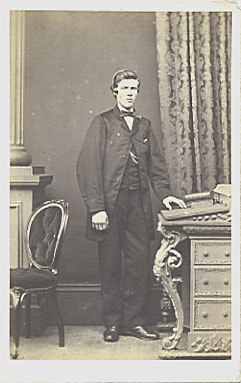
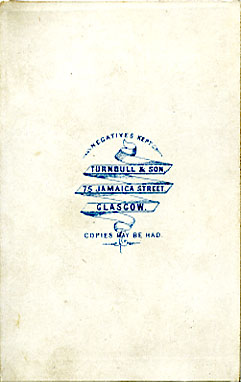
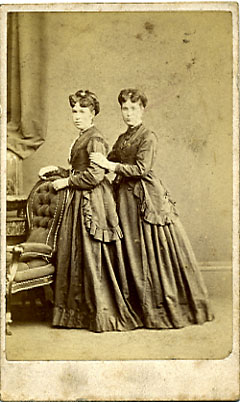
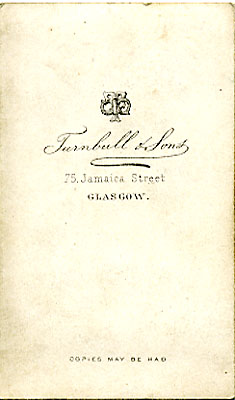




Two early cdvs from the 1860s. Note that the name and address within a straight sided ribbon refers to Turnbull & Son, not Sons, and this type of design could be from 1865 or 1866. The format with the monogram above the name and address, and with 'Sons', is presumably later, and this style is known to have been in use by other local photographers in 1866,
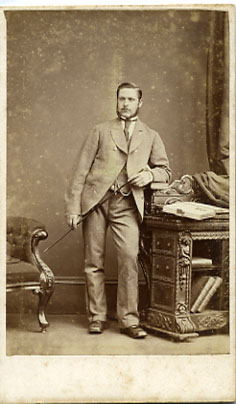
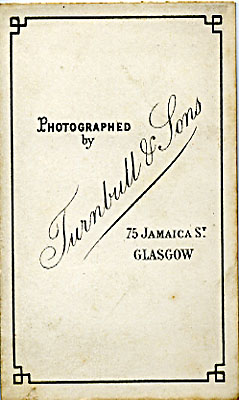
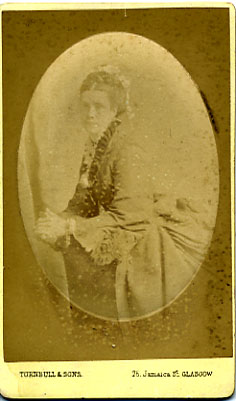
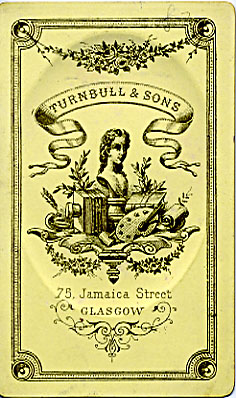
The first card above is from the early 1870s, with its full length framing, and simple setting. The 'rotating squares' type of border design was introduced on cards produced by the printer Marion in the first years of the 1870s, and was widely copied. The second card above must also be from the early 1870s, but the design of the back is unusually ornate for the time.
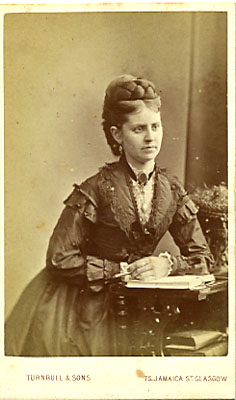
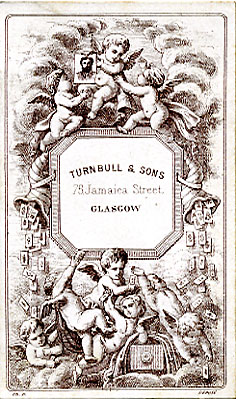
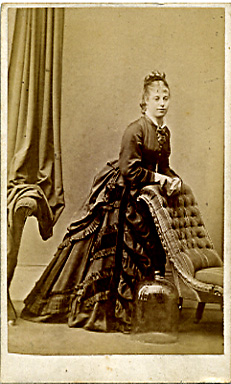
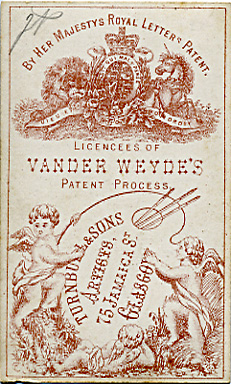
The first card above with the word 'Depose' at the bottom - so presumably a French supplier such as Marion - shows a leaning pose, which was much used in the early to mid 1870s. The second card above refers to the 'Vander Weyde' process of photo finishing (stippled backgrounds?) which was patented by a Henry van der Weyde around 1874, so must be this date or later.
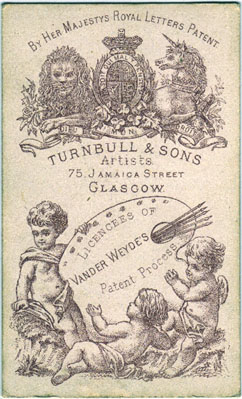
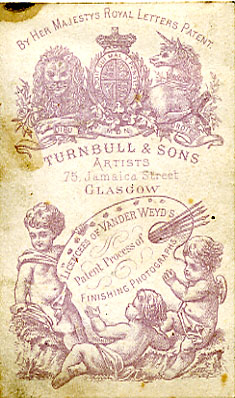
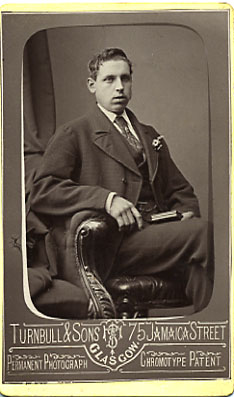
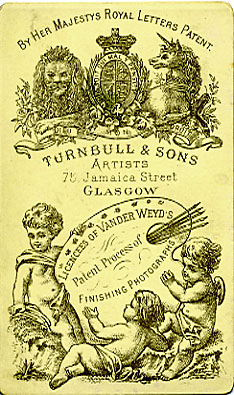
The sequence of the three cdv reverse designs above is not certain The first two do not mention the later patents acquired, (see below) so are probably also 1874. The final image refers to the chromotype process, but the reverse doesn't, which suggests the mask on the front was an immediate response to gaining the licence, before new reverse designs could be obtained. So this might date to 1875 or 76.
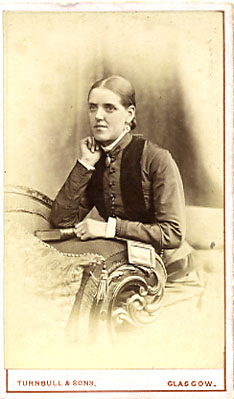
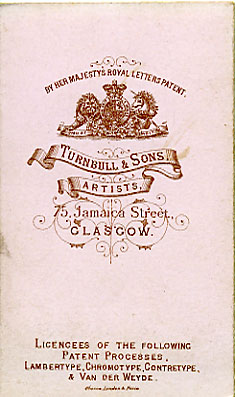
The card above shows a more typical design for this period, and was supplied by the printer Oborne of London and Paris. It refers to other photo processes now licenced by Turnbull; the 'Lambertype' used an enlarged image, and was patented in 1875. 'Chromotype' was an improvement on the basic carbon process, and 'Contretype' a process for re-touching negatives. These were in addition to the 'Vander Weyde' so the card probably belongs to the period 1875 - 1877.
It is notable that the central portion on the reverse of the cabinet card below is identical in design and size to the design featured on the cdv below it, suggesting that the date is similar. However, aspects of the image - the full framing, the (very) rustic chair, the tall bowler, and the mis-matched jacket and trousers - seem earlier. Perhaps this is a re-photograph of an earlier print. However, it is curious that it was still felt necessary to identify the format ('Cabinet Portrait') in the later 1870s.
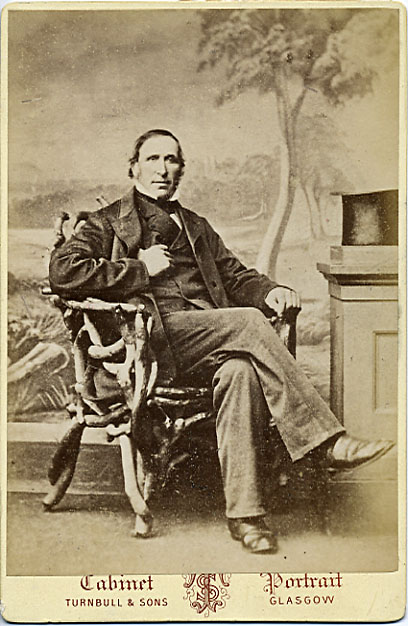
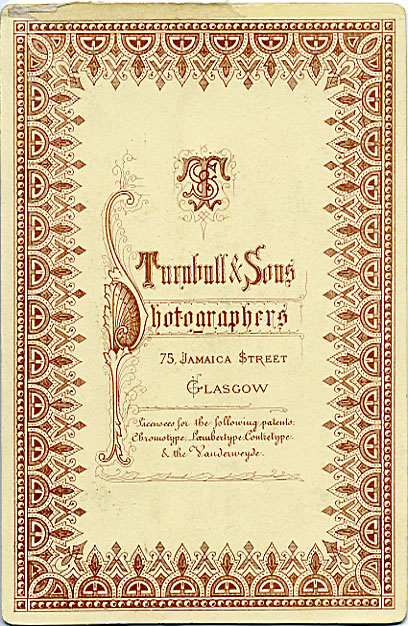
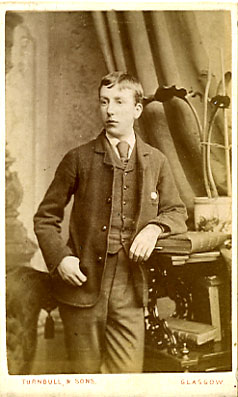
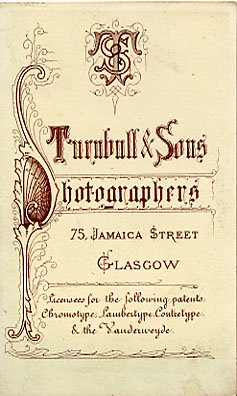
The two cdvs below, and the one above, are on gilt edged card. On the two below text has been added relating to the Luxograph apparatus. The hand stamped text on the second card below reads 'This portrait was taken (without daylight) by the patent Luxograph Apparatus'. This seems to have been a system of portable lighting, which was patented in 1878, so these two cdvs are probably from a year or two after this date. The design on the back may have persisted for some time, as an example from 1882 is known.
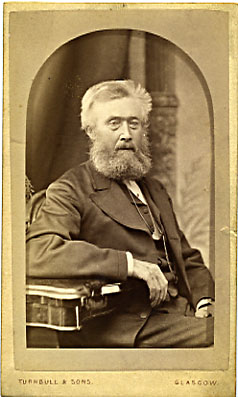
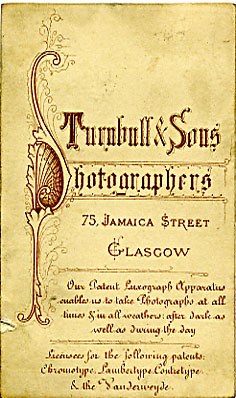
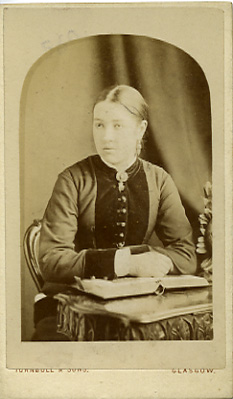
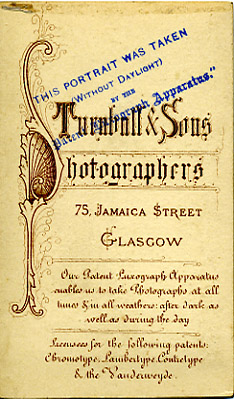
The first three cards below share the same design, only altered as the company became established in Greenock (1881) and then in Belfast. They are all from the early 1880s, with the final one being earlier than the move to 10 Jamaica Street after 1884. The closer head and shoulders portrait on the third one, with the clear highlights and dense blacks probably results from some version of the carbon process, perhaps a 'Chromotype'. The card producer is not marked on the first of these three , but the second came from the 'A A Co., Glasgow', and the third from the curiously named 'Leather, Sadler & Holmes, Manch (ester?)'. The fourth cdv also shows the Greenock address, but not Belfast, so must be within a year of 1883.